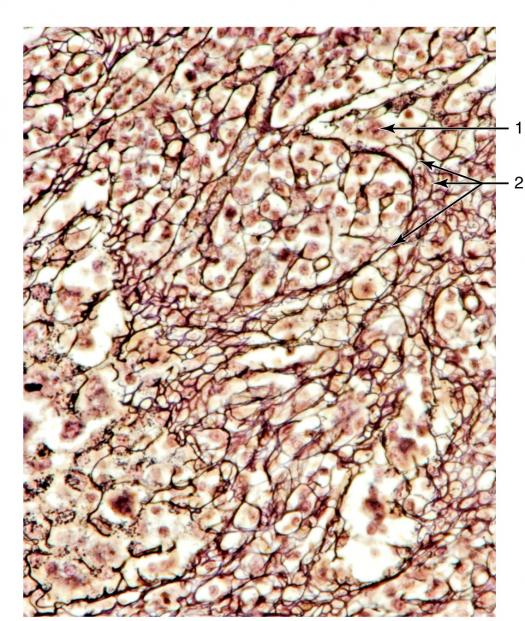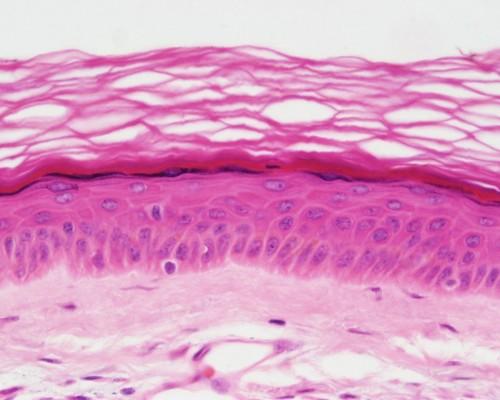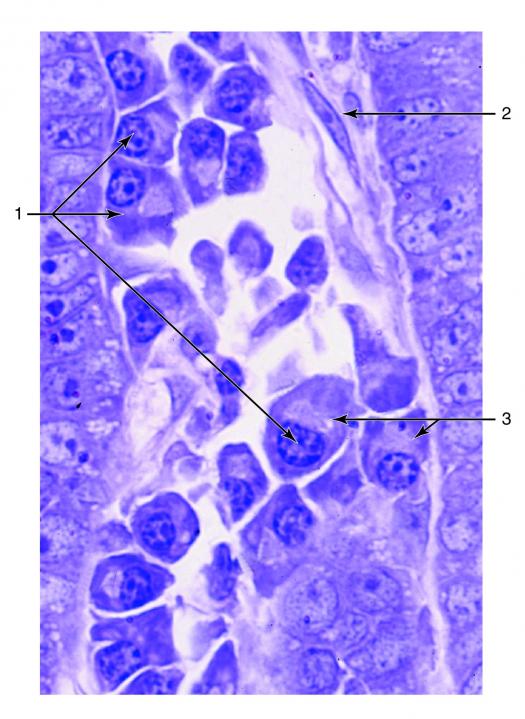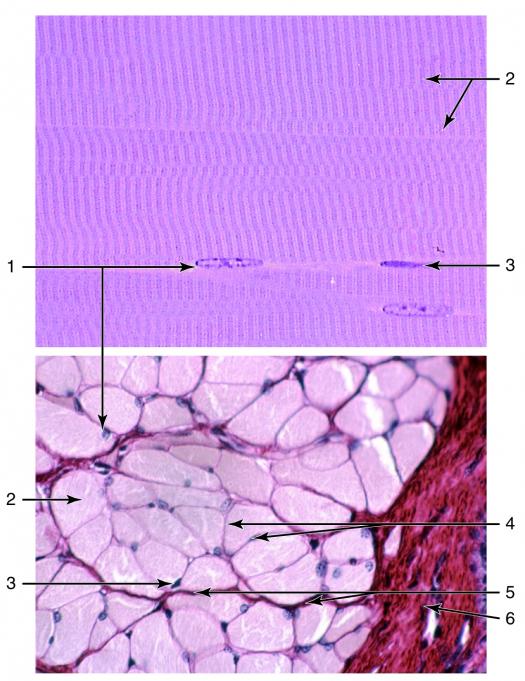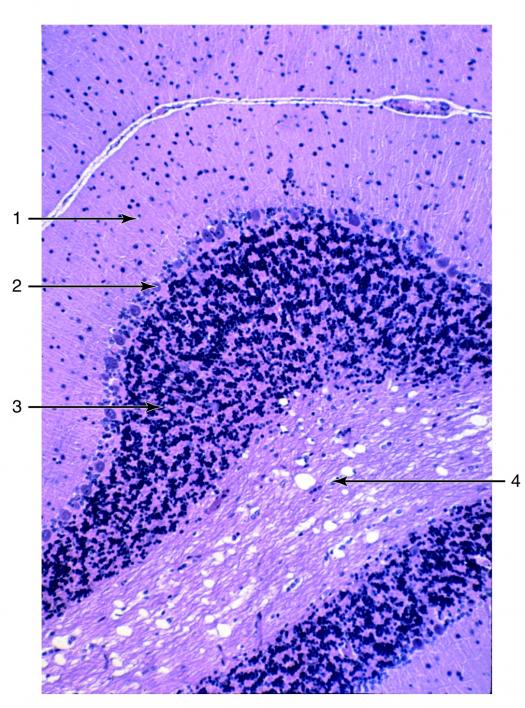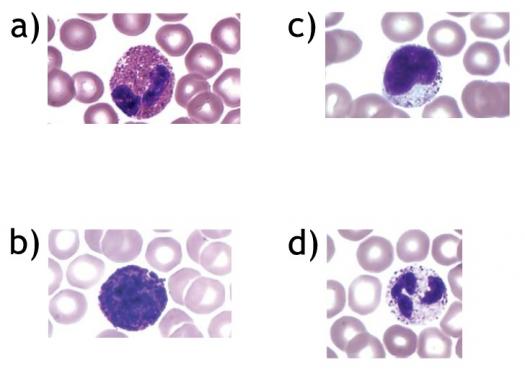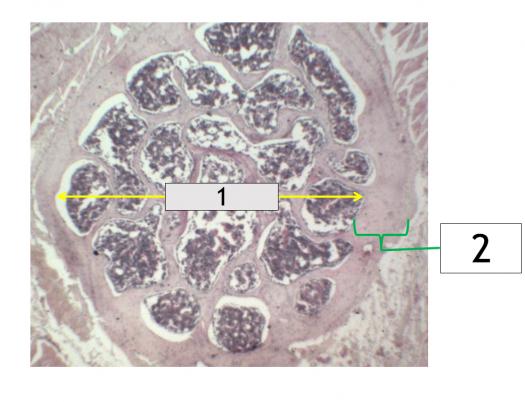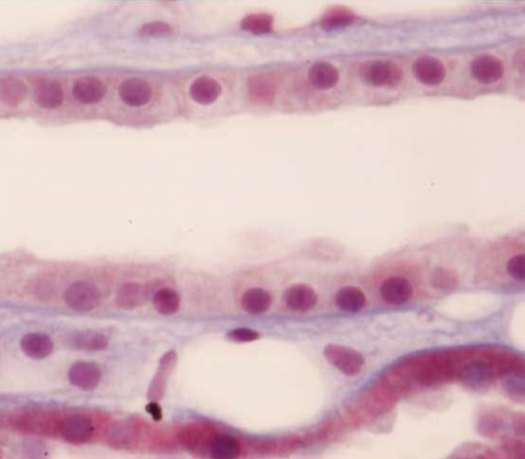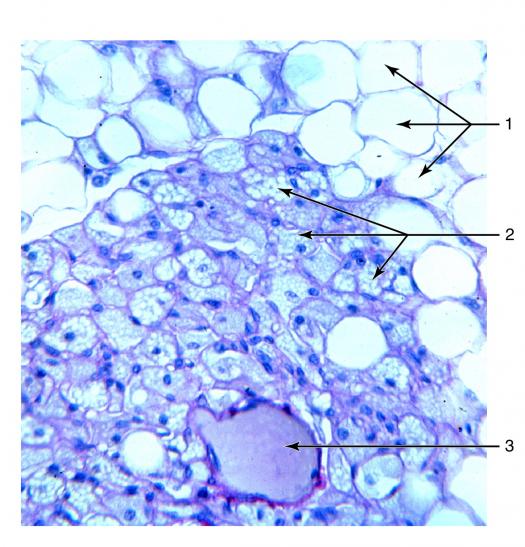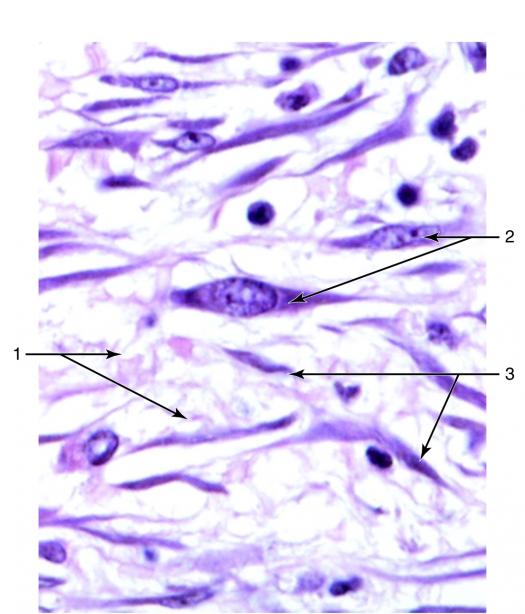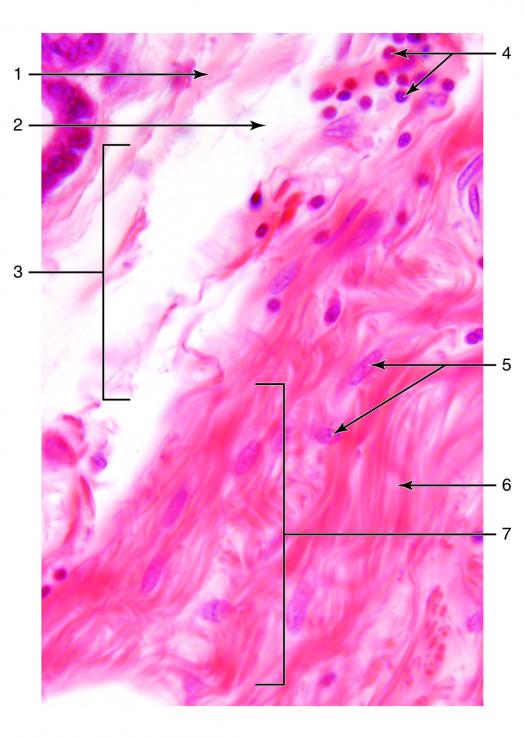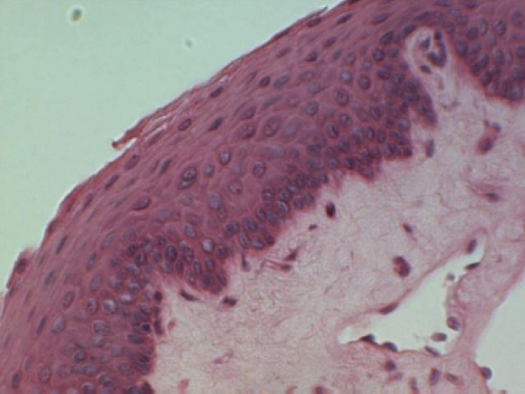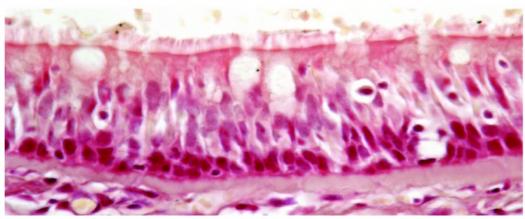Histology Lab Exam! Toughest Trivia Quiz

The human body is made in different tissues and cells which are tasked with performing various functions. Do you think you know enough about where these tissues are found within the body when asked about them in a diagram? One of the ways that you can test yourself is by taking this histology lab exam toughest trivia quiz and see well you do—all the best as you tackle it.
- 1.
What is the Type Of This Tissue?
- A.
Reticular Connective Tissue
- B.
Peripheral Nerve Fiber
- C.
Dense Irregular Connective Tissue
- D.
Simple Squamous Epithelium
Correct Answer
A. Reticular Connective TissueExplanation
The correct answer is Reticular Connective Tissue. This type of tissue is characterized by a network of reticular fibers produced by fibroblasts. It forms the framework of organs such as the liver, spleen, and lymph nodes, providing support and structure. It is composed of reticular cells and reticular fibers, which are thin, branching fibers. Reticular connective tissue is important for supporting and filtering blood cells and other components in these organs.Rate this question:
-
- 2.
Where Can This Tissue Be Found?
- A.
Esophagus
- B.
Skin
- C.
Anal Canal
- D.
Respiratory Tract
Correct Answer
B. SkinExplanation
Skin is the correct answer because it is a tissue that can be found all over the body. The skin is the largest organ in the body and serves as a protective barrier against external factors. It is composed of multiple layers and contains various structures such as hair follicles, sweat glands, and sensory receptors. The skin plays a crucial role in regulating body temperature, preventing water loss, and providing sensation.Rate this question:
-
- 3.
What Is Structure Number 1?
- A.
Neuron Cell Body
- B.
Perineurium
- C.
Nerve Fibre
- D.
Epineurium
Correct Answer
B. PerineuriumExplanation
The perineurium is a protective layer that surrounds bundles of nerve fibers called fascicles. It helps to maintain the structural integrity of the nerves and provides support and protection against external forces. The other options, such as neuron cell body, nerve fiber, and epineurium, are not correct because they do not specifically refer to structure number 1.Rate this question:
-
- 4.
What Is The Type Of This Tissue?
- A.
Smooth Muscle
- B.
Cardiac Muscle
- C.
Elastic Cartilage
- D.
Adipose Tissue
Correct Answer
B. Cardiac MuscleExplanation
The correct answer is Cardiac Muscle because this type of tissue is found only in the heart. Cardiac muscle is responsible for the rhythmic contractions of the heart, allowing it to pump blood throughout the body. It is composed of specialized muscle cells that are interconnected and have striations, similar to skeletal muscle. Cardiac muscle is involuntary, meaning it contracts without conscious control. This tissue is unique in its ability to generate and conduct electrical impulses, which regulate the coordinated contractions of the heart.Rate this question:
-
- 5.
What Is Structure Number 1?
- A.
Glial Cells
- B.
Osteocytes
- C.
Plasma Cells
- D.
Lacunae
Correct Answer
C. Plasma CellsExplanation
Structure number 1 refers to plasma cells.Rate this question:
-
- 6.
What Is The Name Of This Tissue?
- A.
Skeletal Muscle
- B.
Dense Rigular Connective Tissue
- C.
Periosteum
- D.
Smooth Muscle
Correct Answer
A. Skeletal MuscleExplanation
The correct answer is Skeletal Muscle because the image shows a tissue that is striated and has multiple nuclei, which are characteristic features of skeletal muscle. Dense Regular Connective Tissue is characterized by parallel collagen fibers and is not present in the image. Periosteum is a connective tissue that covers the outer surface of bones and is not seen in the image. Smooth Muscle is not striated and has a single nucleus, which does not match the characteristics of the tissue in the image. Therefore, the tissue in the image is most likely skeletal muscle.Rate this question:
-
- 7.
Which Type Of Epithelium Is Shown In The Picture Below?
- A.
Stratified Squamous Non-Keratinized Epithelium
- B.
Pseudo-Stratified Epithelium
- C.
Respiratory Epithelium
- D.
Urothelium
Correct Answer
D. UrotheliumExplanation
The correct answer is Urothelium. Urothelium is a type of transitional epithelium that lines the urinary tract, including the bladder, ureters, and urethra. It is characterized by multiple layers of cells that can stretch and accommodate the expansion and contraction of the urinary organs. The picture likely shows the characteristic appearance of urothelium, which is distinct from the other types of epithelium listed in the options.Rate this question:
-
- 8.
What Is The Name Of This Tissue?
- A.
Cerebellar Cortex
- B.
Nerve Fibres
- C.
Dense Regular Connective Tissue
- D.
Granulocytes
Correct Answer
A. Cerebellar CortexExplanation
The correct answer is Cerebellar Cortex. The cerebellar cortex is the outer layer of the cerebellum, a region of the brain responsible for coordinating voluntary movements, balance, and posture. It is composed of densely packed neurons and glial cells, and it contains a variety of different types of cells, including granule cells, Purkinje cells, and stellate cells. The cerebellar cortex plays a crucial role in motor control and learning, and damage to this tissue can result in motor coordination deficits.Rate this question:
-
- 9.
Which Of These Pictures Shows An Eosinophil?
- A.
C
- B.
D
- C.
A
- D.
B
Correct Answer
C. A -
- 10.
The Picture Represents A Cross Section Through Which Type Of Bone?
- A.
Secondary Bone
- B.
Compact Bone
- C.
Spongy Bone
- D.
Short Bone
Correct Answer
D. Short BoneExplanation
The picture represents a cross section through a short bone because short bones are typically cube-shaped with a spongy bone interior surrounded by a thin layer of compact bone. The image shows a compact bone layer on the outside and a spongy bone interior, which aligns with the characteristics of a short bone.Rate this question:
-
- 11.
Where Can This Type Of Epithelium Be Found?
- A.
Orbital Cavity
- B.
Ovaries
- C.
Vagina
- D.
Capillaries
Correct Answer
B. OvariesExplanation
The correct answer is Ovaries. Ovaries are reproductive organs in females that produce eggs and hormones. The epithelium in the ovaries is called the germinal epithelium, which is a type of simple cuboidal epithelium. This type of epithelium is found in various parts of the body, including the ovaries, where it lines the surface and plays a role in the development and release of eggs during the menstrual cycle.Rate this question:
-
- 12.
What Is The Type Of This Tissue?
- A.
Mast Cell
- B.
Cardiac Muscle
- C.
Fibrocartilage
- D.
Smooth Muscle
Correct Answer
C. FibrocartilageExplanation
Fibrocartilage is the correct answer because it is a type of connective tissue that contains both collagen fibers and cartilage cells. It is found in areas of the body that require both support and flexibility, such as the intervertebral discs in the spine and the pubic symphysis. Fibrocartilage is known for its strength and ability to absorb shock, making it an important tissue in areas that experience a lot of stress or movement.Rate this question:
-
- 13.
What Is Structure Number 2?
- A.
White Adipose Tissue
- B.
Leukocytes
- C.
Nerve Fibres
- D.
Brown Adipose Tissue
Correct Answer
D. Brown Adipose TissueExplanation
Structure Number 2 is identified as Brown Adipose Tissue.Rate this question:
-
- 14.
What Is Structure Number 4?
- A.
Chondroblasts
- B.
Chondrocytes In Lacunae
- C.
Spongy Bone
- D.
Bundles Of Collagen
Correct Answer
B. Chondrocytes In LacunaeExplanation
Chondrocytes are cells found in cartilage that are responsible for producing and maintaining the extracellular matrix. Lacunae are small spaces within the matrix where chondrocytes reside. Therefore, structure number 4 refers to chondrocytes in lacunae.Rate this question:
-
- 15.
What Is The Name Of This Tissue?
- A.
Epithelium
- B.
White Adipose Tissue
- C.
Loose Connective Tissue
- D.
Elastic Cartilage
Correct Answer
B. White Adipose TissueExplanation
White adipose tissue is the correct answer because it is a type of connective tissue that stores energy in the form of fat. It is composed of adipocytes, which are specialized cells that store lipids. This tissue is found throughout the body and plays a role in insulation, cushioning, and energy storage.Rate this question:
-
- 16.
What Is Structure Number 2?
- A.
Active Fibroblasts
- B.
Dense Regular Connective Tissues
- C.
In-active Fibroblasts
- D.
Collagen Fibres
Correct Answer
A. Active FibroblastsExplanation
Active fibroblasts are cells that are responsible for the synthesis and maintenance of the extracellular matrix in connective tissues. They play a crucial role in wound healing and tissue repair by producing collagen fibers and other components of the extracellular matrix. In contrast, in-active fibroblasts are quiescent cells that are not actively involved in matrix synthesis. Dense regular connective tissues are characterized by densely packed collagen fibers arranged in a parallel fashion, providing strength and support to structures like tendons and ligaments. Therefore, the correct answer is active fibroblasts, as they are the cells responsible for the production of collagen fibers and maintenance of connective tissues.Rate this question:
-
- 17.
This Structure Is Formed Mainly Of:
- A.
Elastic Fibres
- B.
Collagen Fibres
- C.
Reticular Fibres
- D.
Non Of The Above
Correct Answer
B. Collagen FibresExplanation
The correct answer is Collagen Fibres. Collagen fibers are the main component of this structure.Rate this question:
-
- 18.
What Is Structure Number 3?
- A.
Dense Collagen Bundle
- B.
Dense Irregular Connective Tissue
- C.
Fibroblast
- D.
Loose Connective Tissue
Correct Answer
D. Loose Connective Tissue -
- 19.
What Type Of Epithelium Is Shown In The Picture Below?
- A.
Stratified Squamous Epithelium
- B.
Pseudo-Stratified Columnar Epithelium
- C.
Simple Squamous Epithelium
- D.
Stratified Cuboidal Epithelium
Correct Answer
A. Stratified Squamous EpitheliumExplanation
Stratified squamous epithelium is characterized by multiple layers of cells, with the outermost layer being flat (squamous) cells. This type of epithelium is typically found in areas that experience significant wear and tear, such as the skin, mouth, esophagus, and vagina. The image shows multiple layers of cells with the outermost layers appearing flat, which is indicative of stratified squamous epithelium.Rate this question:
-
- 20.
What Is The Type Of This Tissue?
- A.
Pseudo-Stratified Columnar Epithelium
- B.
Dense Irregular Connective Tissue
- C.
Elastic Cartilage
- D.
Skeletal Muscle Cell
Correct Answer
A. Pseudo-Stratified Columnar EpitheliumExplanation
The correct answer is Pseudo-Stratified Columnar Epithelium. This tissue type is characterized by cells that appear to be layered or stratified, but in reality, all cells are in contact with the basement membrane. It is found in the respiratory tract, where it helps to move mucus and trap foreign particles.Rate this question:
-
Quiz Review Timeline +
Our quizzes are rigorously reviewed, monitored and continuously updated by our expert board to maintain accuracy, relevance, and timeliness.
-
Current Version
-
Oct 18, 2024Quiz Edited by
ProProfs Editorial Team -
Apr 16, 2017Quiz Created by
Harmony



